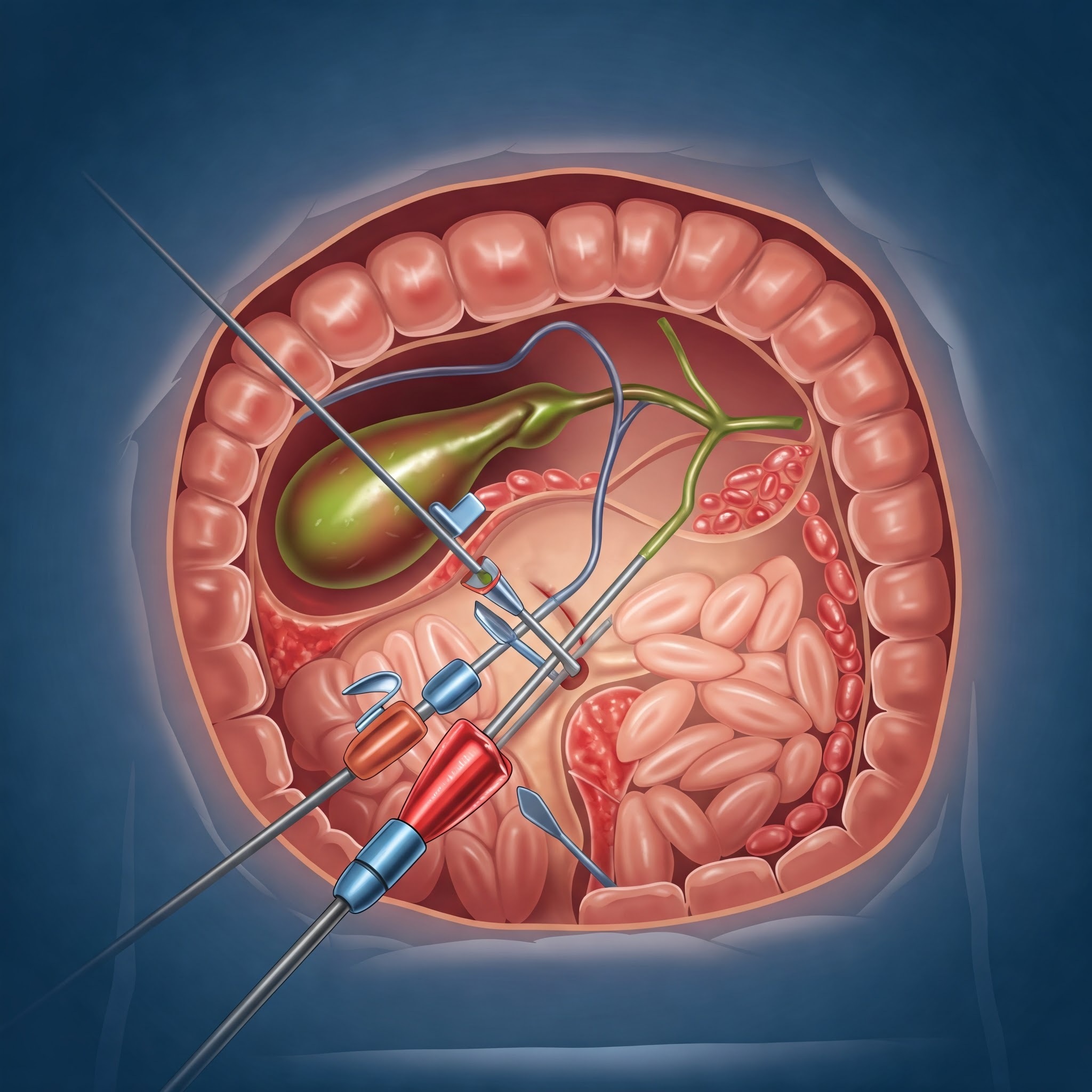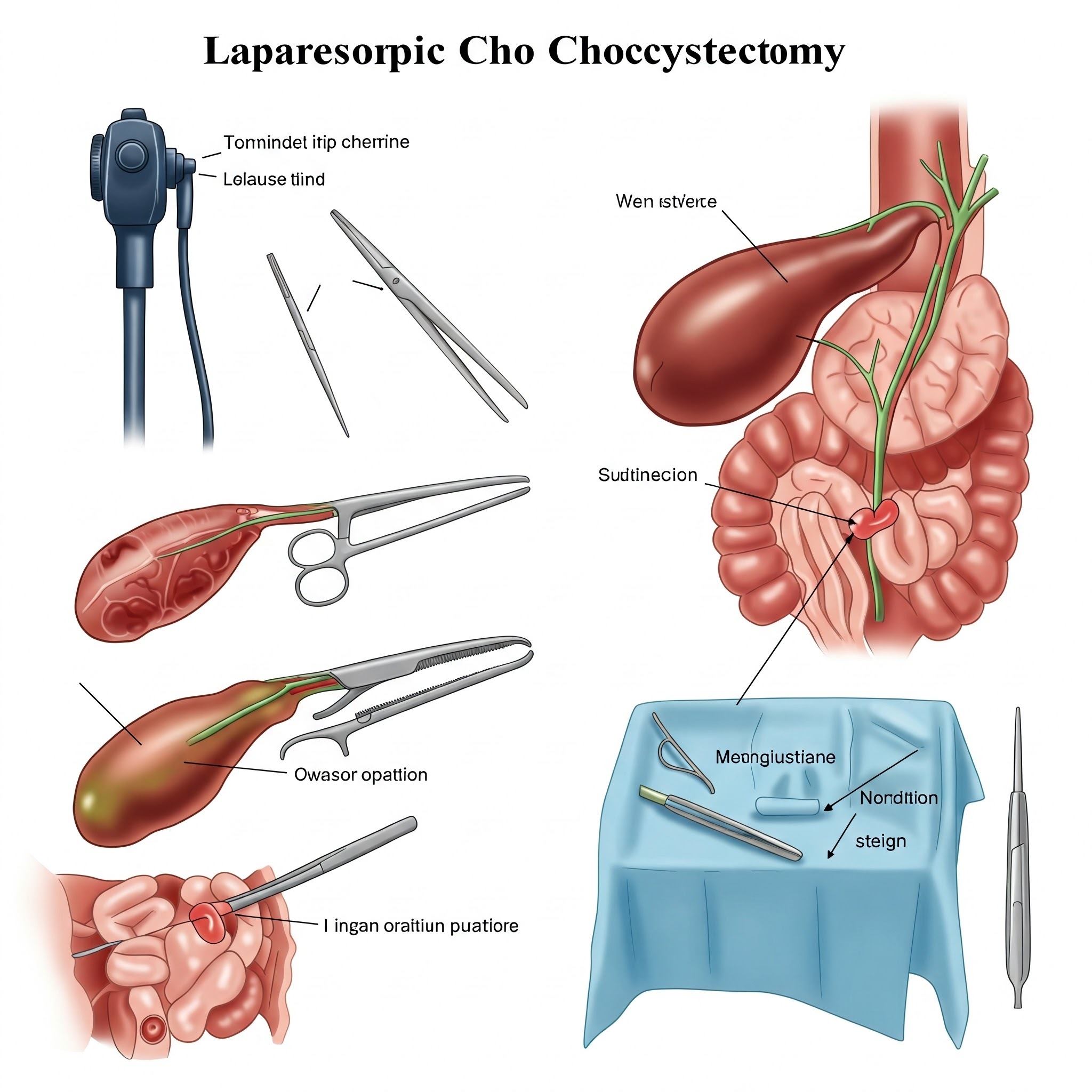Safe, effective gallbladder removal with minimally invasive surgery
Expert laparoscopic cholecystectomy for long-term digestive health
At Neo-Woman’s General Surgery Clinic, we specialize in laparoscopic (keyhole) gallbladder removal, a minimally invasive cholecystectomy procedure that effectively treats gallbladder-related issues such as gallstones, infection, and inflammation. This advanced technique involves making a few small incisions, ensuring quicker recovery, minimal scarring, and reduced discomfort compared to traditional open surgery.
Our experienced surgeons follow precise laparoscopic cholecystectomy steps using state-of-the-art equipment to safely remove the gallbladder. The procedure typically takes about an hour, with most patients resuming normal activities within a few days. We prioritize patient safety, providing comprehensive guidance on potential laparoscopic cholecystectomy complications and how to manage them.
Post-surgery, our team offers personalized care plans focused on optimal recovery. We provide clear instructions on laparoscopic cholecystectomy post-op care, including pain management, activity recommendations, and dietary adjustments. Understanding the appropriate gallbladder surgery diet is crucial for digestion after surgery, and we help patients make the necessary nutritional changes to maintain long-term digestive health.
Our compassionate team also assists patients in recognizing signs of gallbladder surgery complications, such as infection or bile leakage, ensuring prompt medical attention if needed. If you’re searching for experienced gallbladder surgeons near me, Neo-Woman’s General Surgery Clinic in Pune offers trusted expertise, advanced technology, and exceptional patient-centered care for a smooth, worry-free recovery journey.


Laparoscopic cholecystectomy: minimally invasive gallbladder removal
Gallbladder removal through Laparoscopic Cholecystectomy is a safe and efficient procedure for individuals experiencing gallstones or gallbladder-related issues. Our surgeons use keyhole techniques to perform the surgery through small incisions, ensuring reduced pain, shorter hospital stays, and quicker recovery. We also provide personalized post-operative care, including dietary guidance, to support optimal recovery.
- Gallbladder removal: when is laparoscopic cholecystectomy necessary?
Gallbladder removal is often recommended when patients experience severe symptoms from gallstones, cholecystitis, or other gallbladder-related issues. Laparoscopic cholecystectomy, commonly referred to as keyhole surgery, is a minimally invasive procedure that uses a small incision to access and remove the gallbladder. This technique is less invasive compared to traditional open surgery, resulting in faster recovery and minimal scarring. The procedure is necessary when gallstones block the bile duct, causing intense pain, nausea, and digestive discomfort. If you’ve been advised to undergo gallbladder removal, consulting with experienced gallbladder surgeons near me ensures proper diagnosis and personalized care. Early intervention can prevent complications such as infections or gallbladder rupture.
Here are some of the check up and health screenings that you should get done:
- Pelvic Exam
- Pap Smear (Cervical Cancer Screening)
- Breast Exam
- Blood Pressure Measurement
- Cholesterol Screening
- Bone Density Scan (DXA)
- Blood Sugar Test (Glucose Screening)
- Thyroid Function Tests
- Blood Count (Complete Blood Count, CBC)
* The specific exams and screenings recommended can vary based on a woman’s age, family history, personal health history, and risk factors. It’s essential to discuss your individual healthcare needs and screening schedule with your healthcare provider.
- The role of diet before and after gallbladder surgery
Diet plays a crucial role in managing gallbladder-related symptoms and aiding recovery after laparoscopic gallbladder removal. Before surgery, patients are often advised to avoid fatty, fried foods to reduce gallstone formation. After the procedure, maintaining a gallbladder surgery diet rich in fiber, fruits, and vegetables helps the digestive system adapt to the absence of the gallbladder. Gradually reintroducing fats and monitoring for digestive issues like bloating or diarrhea are essential for long-term wellness. Minimally invasive cholecystectomy allows patients to resume their regular diet sooner than open surgery, but proper nutritional guidance remains critical for a smooth recovery.
- Laparoscopic vs. Open cholecystectomy: what’s the difference?
The primary difference between laparoscopic (keyhole) and open cholecystectomy lies in the surgical technique and recovery process. Laparoscopic cholecystectomy involves making small incisions through which a camera and surgical tools are inserted to remove the gallbladder. This method leads to a quicker recovery, reduced pain, and minimal scarring. In contrast, open cholecystectomy requires a larger incision, resulting in longer recovery time and increased postoperative discomfort. Understanding laparoscopic cholecystectomy steps helps patients feel more confident about their procedure and recovery process. While both surgeries are effective, the laparoscopic method is generally preferred for its efficiency and reduced complication rates.
- Common gallbladder problems in women and surgical solutions
Women are more prone to gallbladder issues due to hormonal factors such as pregnancy, oral contraceptive use, and hormone replacement therapy. Gallstones are a common cause of gallbladder removal among women, often necessitating laparoscopic cholecystectomy. Symptoms include abdominal pain, nausea, and digestive disturbances, which can be alleviated through timely intervention. Gallbladder surgeons near me can assess symptoms, recommend dietary changes, and determine if surgery is required. Understanding the hormonal influences on gallbladder function helps women make informed decisions about their health and seek prompt treatment when necessary.
- Recovery after laparoscopic gallbladder surgery: what to expect
The recovery process following laparoscopic gallbladder removal typically spans a few weeks, with most patients resuming normal activities within 7 to 10 days. Female gallbladder surgery recovery time can vary based on factors like age, overall health, and adherence to postoperative care guidelines. After surgery, patients may experience mild shoulder pain, bloating, and digestive changes, which gradually subside. Laparoscopic cholecystectomy post-op care includes avoiding heavy lifting, following a low-fat diet, and attending follow-up appointments. Awareness of potential laparoscopic cholecystectomy complications, such as infection or bile duct injury, helps patients recognize warning signs early and seek timely medical attention.

Frequently asked questions
Why is gallbladder removal necessary?
It’s usually required when gallstones cause pain, infection, or block bile flow, leading to conditions like cholecystitis.
How is laparoscopic cholecystectomy performed?
The surgeon uses small incisions, a camera, and specialized tools to remove the gallbladder without open surgery.
What is the recovery time after gallbladder removal?
Most patients resume daily activities within a week, but full recovery can take 4-6 weeks.
Will my digestion change after surgery?
While most people digest food normally, some may need to avoid fatty or spicy foods initially.
What complications should I watch for post-surgery?
Watch for signs of infection, bile leakage, or digestive discomfort. Consult your doctor if symptoms persist.
Disclaimer: Results and patient experiences may vary. These are dependent on a number of factors including age, medical history, lifestyle and more.
